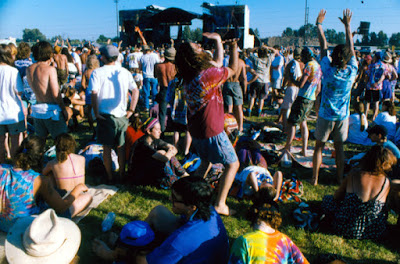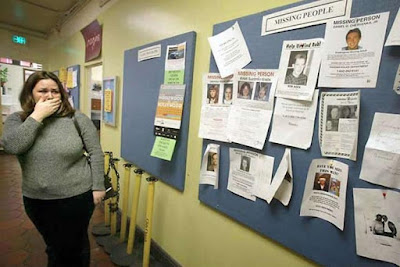 |
| With over 500,000 homeless in the United States, homeless cities are popping up at record numbers Photo courtesy Mercury News, San Jose, Calif. |
The numbers are staggering. According to the Department of Housing and Urban Development (HUD), in the United States, there were approximately 554,000 homeless people on any given night last year. Sadly, that number is rising.
According to Forbes, cities with the highest rate of homelessness are in one of five states: California (129,972), New York (91,897), Florida (31,030), Texas (25,310), and Washington (22,304). It's not surprising that the problem has become much more visible in urban areas and over half of all homeless people live in one of the country’s 50 largest cities.
Homelessness is an issue that permeates many societies throughout the world but seems to be a unique struggle in the United States. One might be surprised to know, the Big Apple has one of the lowest levels of unsheltered homeless, at 5%, while in Los Angeles, 75% of people were found in unsheltered locations.
People who are homeless are often not able to secure and maintain regular, safe, and secure housing. Many become transient, never staying in one place for any length of time . . . wandering the streets, from city to city.
Who Are the Homeless?
People often become homeless when the economic issues collide with their housing issues and often include other factors such as domestic violence, physical disability, mental illness, addiction, transitioning into adulthood, and strains on relationships.
 |
| Many homeless people start out with jobs and homes; then social and economic factors intervene. |
Something that we see more and more often these days is homelessness caused by untreated Post Traumatic Stress Disorder (PTSD), along with untreated depression and other serious mental illnesses.
According to the Mental Illness Policy Org., in January 2015, the most extensive survey ever undertaken by the U.S. Department of Housing and Urban Development (HUD) revealed 250,000 homeless individuals suffered from varying mental illnesses. That is 45% of the total homeless population.
At any given time, there are many more people with untreated severe psychiatric illnesses living on the streets than are receiving care in hospitals. Approximately 90,000 individuals with schizophrenia or manic-depressive illness are in hospitals receiving treatment for their disease.
How Many Homeless Are Missing?
As of April 30, 2018, there were 86,927 people in the United States listed as missing in the National Crime Information Center (NCIC) at the Federal Bureau of Investigation. There are no statistics available about missing persons and homelessness being a factor in the disappearance.
To further complicate any understanding of the numbers, homeless shelters and service providers ride a very delicate line. Due to privacy-related HIPAA regulations, tracking a person that is navigating the hodgepodge of homeless services can be nearly impossible. Providers do not report entry logs with missing person systems because of HIPAA. Also, there is no training to use the counts to collect information and data that can help identify known missing persons.
As the law stands, adult persons can come and go as they please. Unlike with missing children, there is no statute requiring law enforcement to even take a report, though in some state’s legislation has been passed to change that and improvements being made.
Organizations like Missing and Homeless are urging communities to work collaboratively with the homeless with direct outreach efforts beyond that system that is in place. Small providers, nonprofits and homeless individuals themselves are more successful in assisting with the search efforts of other missing people.
What Happens When a Loved One is Homeless and Goes Missing?
There is nothing more intense and emotional than not knowing where someone you love is. The ambiguity alone can cause extreme emotional turmoil. Families are left frantically searching, hanging fliers, begging for media exposure, and talking to anyone who will listen in an attempt to find they're missing loved one.
 |
| Bridget Pendell vanished April 2003 and despite hundreds of leads she has never been seen again. Photo courtesy of SF Gate/Flier courtesy Kym Pasqualini - National Center for Missing Adults. |
Bridget Pendell's Story
Bridget Pendell may look like a wasted-thin drug addict and could be wandering the streets of San Francisco or turning tricks in Portland or Phoenix. Or she could be dead, just another unidentified missing person buried in the city’s Potter’s Field.
Her sister Jackie Horne wants to know what happened to Bridget. She has spent the last 15 years searching for her, traveling from New York to San Francisco to scour the city for her missing sister.
 |
| Jackie Horne leaves missing person posters on mailboxes in the Haight district of San Francisco. Photo courtesy of SF Gate/Flier courtesy Kym Pasqualini - National Center for Missing Adults. |
Pendell would be 46 now and shows just how easily homeless can disappear. Horne travels the hard-core sections of the city where women sell their bodies for sex and drugs, leaving missing person posters on mailboxes, giving out her missing person posters and scanning the worn-out faces. Horne quietly asks for help from anyone who will listen.
 |
Bridget's Early Life
Pendell was a beautiful young girl who grew up in Plattsburg, New York, and graduated high school before becoming a Barbizon model student. She eventually became a nurse and met the “man of her dreams,” married, and had a baby girl named Sasha. Pendell had met some friends who followed the Grateful Dead, and she joined them and began following the band throughout the country.
 |
| Followers of the Grateful Dead followed the band to different locations throughout the country. |
Divorce and Disappearance
Pendell’s new lifestyle broke the marriage apart as her husband would have no part in the lifestyle she was dabbling in. Following their divorce, Pendell began wandering between New York, Kansas, and Florida, sometimes with Sasha. There she began using heroin and cocaine and by 1996, she had succumbed to drugs and prostitution.
Pendell’s mother took Sasha while Pendell continued to live in California. Her last chance was when the family decided the only way to save Pendell was to have her enter a two-month drug rehabilitation program. If she refused, no one was certain what would happen to her.
She accepted the help and entered into Seton Health System rehab center. A doctor’s report explaining Pendell’s condition read: “Above average intelligence.” She was released from rehab two days early and immediately left for San Francisco.
 |
| Jackie Horne walks the streets of San Francisco talking to the home to help find her missing sister Bridget Pendell. |
Her Sister's Search
From the answers Horne receives while out searching, it seems Pendell is known everywhere, yet a phantom in a dark world few can imagine.
“I saw her a couple of days ago, I swear,” a prostitute named Crystal said as she brushed on mascara, getting ready to hit the chaos of Mission Street. “She works this street. Shoots up heavy.” Another man said he believed Pendell went by the nickname Butterfly.
Now joining in the search is Pendell’s daughter Sasha, who, despite her mother vanishing, has maintained Straight As at school. Growing up without her mother, she did know her mother was on drugs. “Maybe she feels bad . . . maybe she doesn’t want to come back into my life while she’s on drugs . . . but if I could see her, I would tell her I wasn’t mad.”
Leads have been received from across the country, but most have led back to San Francisco and Santa Cruz. Another possibility is that known rapist, Jack Bokin killed Pendell. Horne reached out to him and he never denied killing her. It is unknown what happened to Pendell and if she is still alive out there somewhere.
 |
| Horrified seeing the numbers of other missing, San Francisco authorities explained to Horne that every year, hundreds of homeless die in the city, most identified. |
Nobody knows exactly how many chronically homeless people are missing. Losing touch with family and friends, they are joining a steady stream of panhandlers and those sleeping on the sidewalk. Going under the radar, with no identification, no address, no welfare checks, they are impossible to follow.
According to the California Department of Justice, more than 17,000 women like Pendell are reported missing in California every year, but no records are kept about how many are homeless. Nearly 300 are found deceased, and although most are found safe, approximately 100 remain missing—whereabouts unknown. Morgues throughout California maintain remains of over 2,000 people, dating back 45 years, who have never been identified.
“We have about two bodies per year we can’t identify, and we cremate another 160 because we make an identification but can’t find relatives to claim them,” said Herb Hawley, administrator at the San Francisco medical examiner’s office. It is a similar story throughout the country.
"It’s just like she vanished off the face of the earth,” said Horne as she walks up and down a line of homeless men and women waiting for lunch at a local church. “These guys in line, all those homeless people around downtown—they have relatives, too, and hopefully some of those relatives know where they are. But Bridget? Nothing.”


No comments:
Post a Comment
We only have the potential for learning and improvement when we enlist the help of others to offer their opinion. Please know your feedback is important to me.